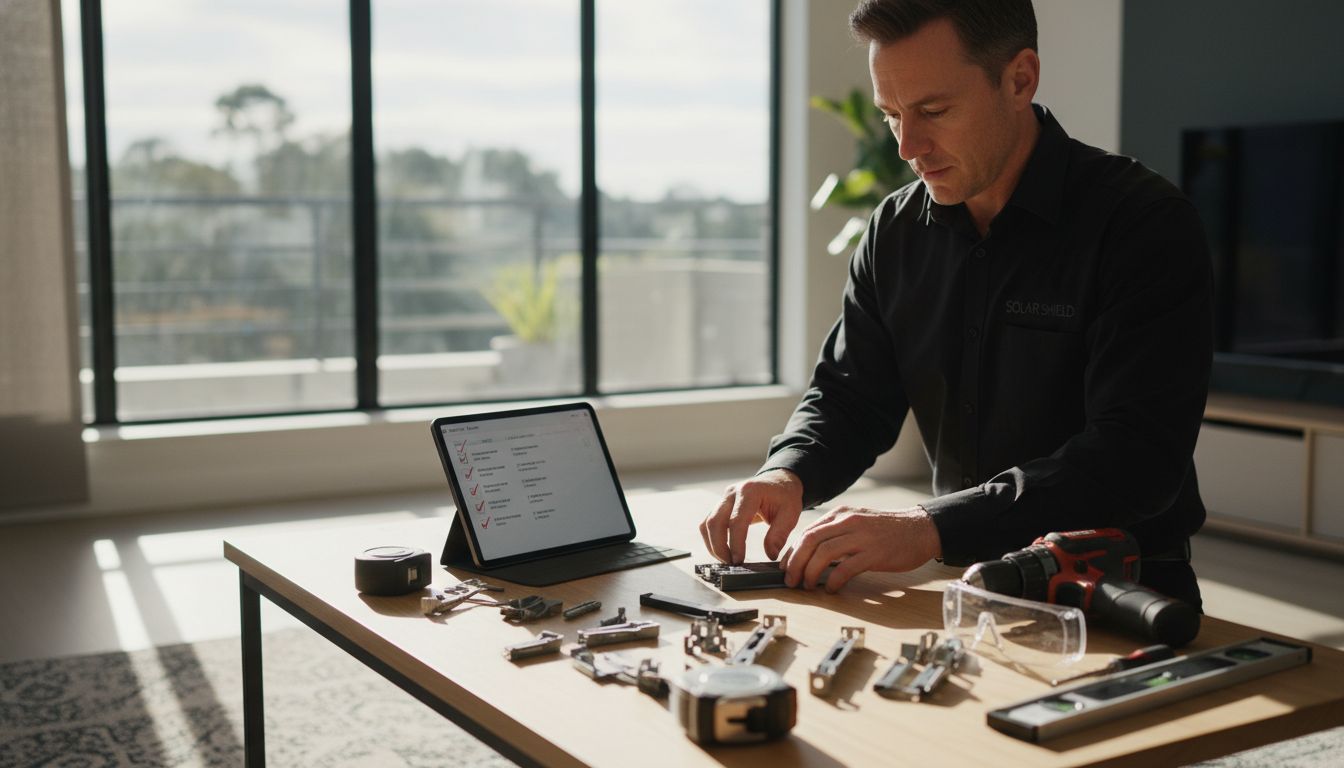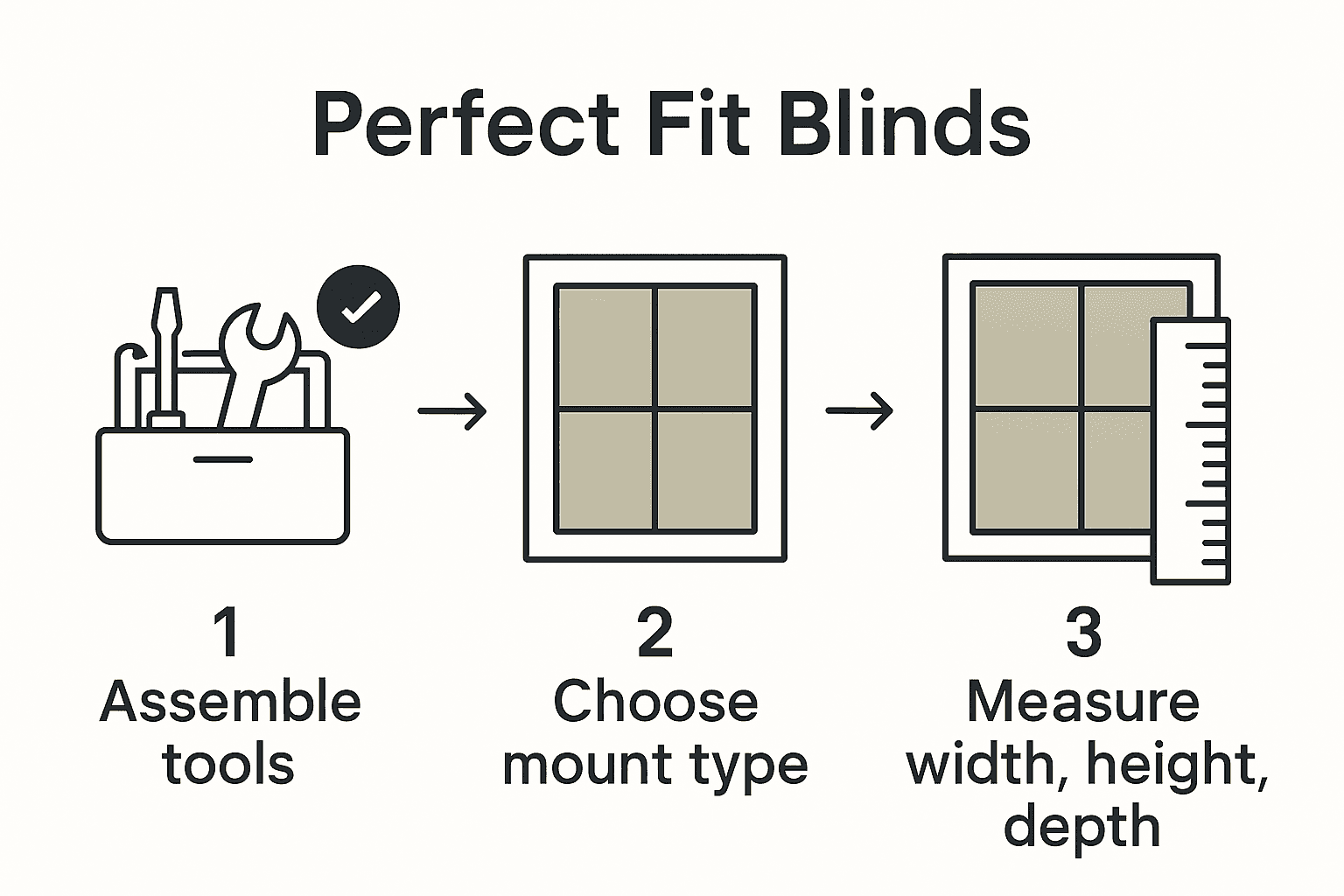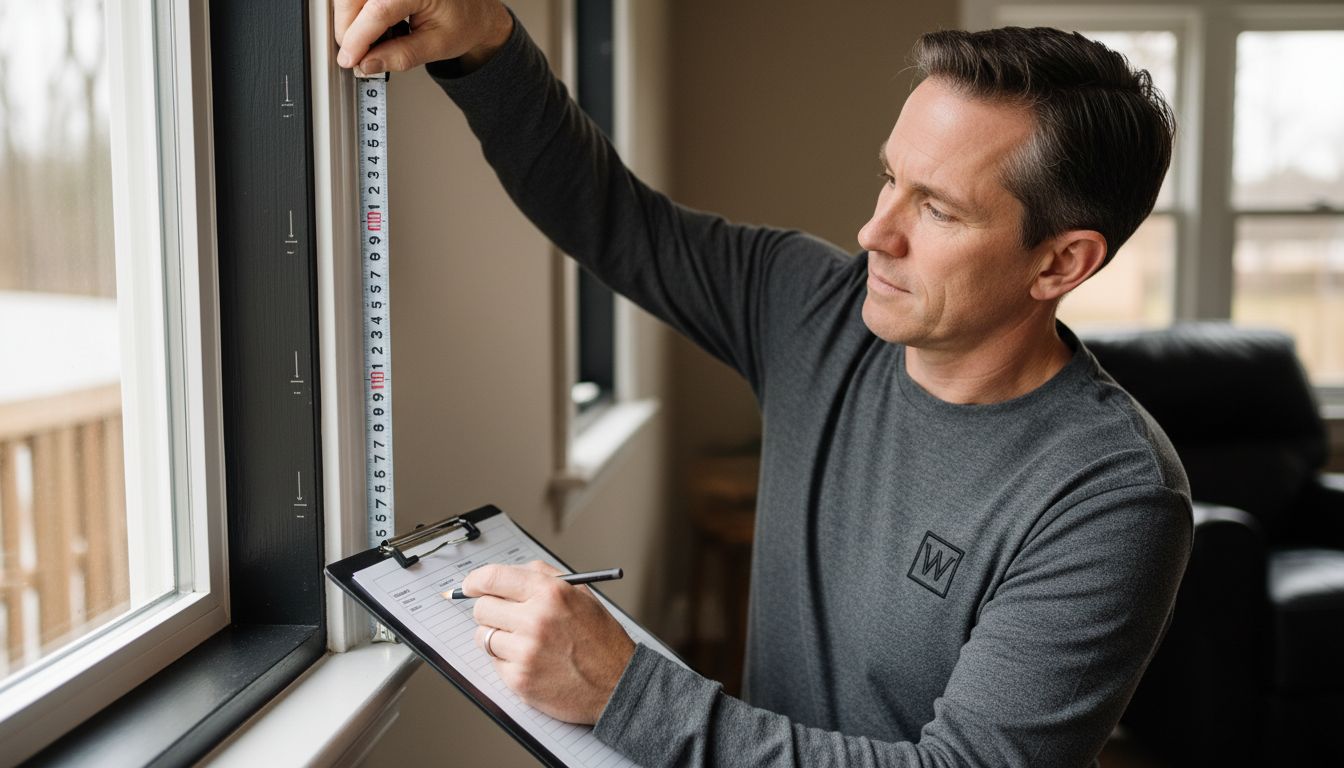
How to Measure Perfect Fit Blinds for a Flawless Installation
Over 80 percent of custom blinds issues stem from small measurement mistakes or missing tools. Getting blinds to fit just right can feel like a puzzle when you’re faced with dozens of choices and precise steps. Whether you are a first-time DIYer or simply want better results, this practical guide breaks down blind installation into clear steps that save time and prevent costly errors.
Table of Contents
- Step 1: Gather Essential Tools And Materials
- Step 2: Determine Mounting Style And Alignment
- Step 3: Measure Window Recess Dimensions Precisely
- Step 4: Double-Check Measurements For Accuracy
- Step 5: Record And Submit Measurements For Ordering
Quick Summary
| Key Point | Explanation |
|---|---|
| 1. Gather essential tools first | Collect a power drill, screwdriver, tape measure, level, safety goggles, brackets, screws, and blinds. |
| 2. Choose the correct mounting style | Decide between inside or outside mounting based on window size and desired aesthetic. |
| 3. Measure window recess accurately | Measure width, height, and depth at multiple points, using the smallest measurements for a proper fit. |
| 4. Double-check all measurements | Verify measurements multiple times to ensure accuracy before ordering, especially for tricky window frames. |
| 5. Record and submit measurements diligently | Document all measurements clearly and accurately to prevent fitting issues during blind production. |
Step 1: Gather essential tools and materials
Preparing for your blind installation starts with collecting the right tools and materials. According to Logistics UK, having the proper equipment makes the entire process smoother and more efficient.
Your installation toolkit should include essential items like a power drill with multiple drill bits, a reliable screwdriver, a tape measure, a sharp pencil for marking measurements, a sturdy level to ensure straight mounting, and safety goggles to protect your eyes. You will also need the blind mounting brackets, screws specific to your wall type (wood, drywall, concrete), and of course the blinds themselves.
One pro tip: Before you start drilling, double check that you have all materials within reach. Nothing slows down a home project faster than realizing midway that you are missing a crucial tool. Pro installers always recommend laying out your entire toolkit and materials on a clean, flat surface before beginning. This simple step can save you time and prevent frustration during the installation process.
With your tools and materials ready, you are now prepared to move on to the next exciting step of measuring your window for a perfect blind fit.
Step 2: Determine mounting style and alignment
Choosing the right mounting style is crucial for achieving a professional and functional window treatment. According to CO4H, there are two primary mounting approaches for blinds: inside mount and outside mount, each with unique considerations for horizontal and vertical window treatments.
An inside mount means installing the blinds within the window frame, creating a sleek and integrated look that highlights the window trim and provides a clean architectural appearance. An outside mount involves installing the blinds on the wall above and around the window frame, which is ideal for windows with shallow recesses, uneven frames, or when you want to make the window appear larger. When determining your mounting style, measure the depth of your window frame carefully. Outside mounts work best when you have limited interior frame depth or want to cover imperfections in the window area.
One critical tip comes from OIB TAC: always consider the functionality and aesthetic you want to achieve. Your mounting choice affects not just appearance but also light control, privacy, and how much of the window will be covered. Take time to visualize how each mounting style will look in your specific space before making a final decision.
With your mounting style selected, you are now ready to move on to precise window measurements that will ensure a perfect blind installation.
Step 3: Measure window recess dimensions precisely
Measuring your window recess with precision is the key to ensuring a perfect blind fit. According to CO4H, accurate measurements are critical for both inside and outside mount installations.
For an inside mount, you will need to measure the exact width, height, and depth of the window recess. Start by measuring the width at three points: top, middle, and bottom of the window. Take the narrowest measurement to ensure your blinds will fit comfortably. Next, measure the height at three points: left, center, and right side of the window. Again, use the shortest measurement to guarantee a proper fit. Depth is equally important many blinds require at least 2 to 3 inches of interior frame depth to mount correctly.
One crucial tip from OIB TAC is to always measure twice and record your measurements carefully. Professional installers recommend using a metal tape measure for the most accurate results, as fabric or cloth measuring tapes can stretch and lead to imprecise measurements.
 For an extra layer of confidence, check out our guide to measuring windows for custom treatments.
For an extra layer of confidence, check out our guide to measuring windows for custom treatments.
With precise measurements in hand, you are now ready to select the perfect blinds that will fit your windows like a glove.

Step 4: Double-check measurements for accuracy
Precision is paramount when measuring for window blinds. According to CO4H, even the smallest measurement error can lead to ill-fitting blinds that compromise both appearance and functionality.
Double-checking your measurements is not just a recommended step its an essential practice for ensuring a perfect blind installation. Start by reviewing your initial measurements methodically. Measure each dimension of the window recess width, height, and depth at least twice. Use different measuring tools if possible to cross verify your results. Pay special attention to potentially tricky areas like uneven window frames or architectural quirks that might affect your measurements.
For an extra layer of confidence, consider our comprehensive guide to measuring windows for blinds which provides additional tips and tricks. Pro tip: Always measure in inches and record measurements to the nearest eighth of an inch for maximum precision. If you find even slight discrepancies between your measurements, always use the smallest measurement for width and the shortest for height to guarantee a proper fit.
With your measurements thoroughly verified, you are now ready to confidently select and order your perfectly fitted blinds.
Step 5: Record and submit measurements for ordering
The final step in your blind measurement journey is accurately recording and submitting your precise dimensions. According to CO4H, proper documentation of window measurements is crucial for ensuring your blinds are manufactured to exact specifications.
Create a clear and organized measurement record that includes the window location room name or number if applicable and the specific mount type inside or outside mount. Write down all measurements width, height, and depth in inches using the most precise figures from your double checking. For digital submissions use a clean spreadsheet or measurement form. If you are submitting measurements online double check that you have entered the numbers correctly before finalizing your order. Pro tip transfer your measurements to the order form using a permanent marker or type them carefully to prevent any potential misreadings.
Before completing your order verify that you have included all necessary details like window orientation mounting preference and any specific customization requirements. If you want additional guidance on navigating the ordering process, check out our comprehensive guide to measuring windows for blinds. Remember that accuracy at this stage prevents potential fitting issues and ensures you receive blinds that look perfect in your space.
With your measurements recorded and submitted you are now one step closer to transforming your windows with beautifully fitted custom blinds.
Get the Perfect Fit with Custom Blinds from Value Blinds
Measuring your windows accurately can feel overwhelming and frustrating. Small errors can cause blinds that don’t fit properly and ruin the look and function you want in your home. This article helps you master key terms like inside mount and outside mount, taking precise width, height, and depth measurements, and double-checking for the flawless fit your windows deserve. Now, turn these essential skills into the ideal window treatments with Value Blinds’ wide selection of custom blinds designed for easy installation and perfect style.

Discover new styles from our New Arrivals or choose trusted options from our Best Sellers. Every product features quality craftsmanship and customization tools to ensure your measurements transform into beautiful, tailored blinds. Don’t let imperfect fitting disrupt your décor. Visit Value Blinds today, use our handy guides, and order your flawless blinds with confidence. Act now to bring elegance and function to your windows with ease.
Frequently Asked Questions
What tools do I need for measuring perfect fit blinds?
To measure for perfect fit blinds, gather essential tools such as a power drill, screwdriver, tape measure, sharp pencil, sturdy level, and safety goggles. Start your project by laying out these tools, ensuring you have everything accessible before you begin measuring.
How do I choose the right mounting style for my blinds?
Selecting the appropriate mounting style involves choosing between an inside mount and an outside mount. Measure the depth of your window frame carefully; inside mounts provide a sleek look while outside mounts can enhance light control and cover imperfections in the frame.
What are the steps for measuring window recess dimensions?
To measure your window recess accurately, measure the width at three points (top, middle, bottom) and take the narrowest measurement. For height, measure at three points (left, center, right) and use the shortest measurement; this ensures your blinds will fit perfectly.
Why is it important to double-check my measurements?
Double-checking your measurements is essential to avoid fitting issues that can arise from small errors. Measure each dimension at least twice and record the findings accurately; this will help ensure your blinds fit as intended and avoid costly mistakes.
How should I record measurements for ordering blinds?
When recording measurements for ordering, create a clear document that includes the window location, mount type, and all measurements in inches. Organize your data neatly to prevent errors during the ordering process; ensuring accuracy here helps guarantee a flawless installation.
What should I do if I discover discrepancies in my measurements?
If you find discrepancies in your measurements, always use the smallest width and the shortest height to ensure a perfect fit. Reassess the measurements taken and make adjustments if necessary before placing your order for the blinds.







